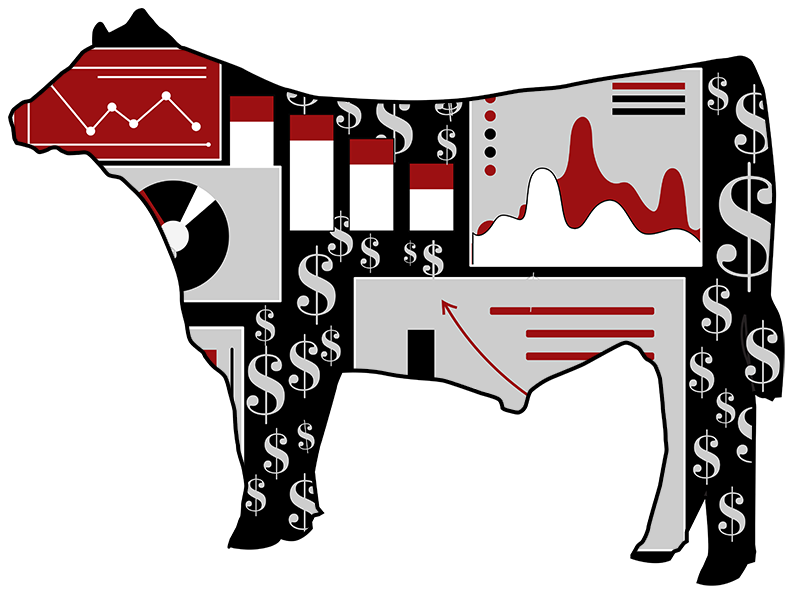
In The Cattle Markets
June USDA Cattle on Feed report assessment.
The USDA Cattle on Feed report released June 23 appears to be neutral to bearish — as bearish as anything cattle-related might be this year. Looking at the most important piece of information first, placements were higher than the prior year and were higher than anticipated.
Expectations ahead of the report suggested placements would be 102% of the prior year with a range of 100.1% to 103.7%. Actual placements during the month of May were 104.6% of the prior year at 1.955 million head — higher and outside the range.
The futures market reacted trivially lower June 26 in the deferred contracts. Live cattle show persistent strength as opposed to a reaction to the report. This is following the persistent strength in beef demand as revealed through the wholesale market. The boxed beef composite value has rallied to almost $340 per hundredweight (cwt.), whereas it spent all of 2022 below $295 and much of that year between $255 and $275. There is clearly strong beef demand supporting the market. We also see this in a seasonally strong Choice-Select spread.
Fed-cattle marketings were right in line with what was anticipated. Expectations were that marketings would be 101.6% of last year, with a range of 101.1% to 102%. Actual marketings during the month of May were 101.7% of the prior year at 1.946 million head.
The cattle-feeding and meatpacking industries continue to face prospects of lighter weekly and monthly marketings and slaughter. There have been very modest Saturday kills, and packer margins have noticeably improved, but they remain as tight as they have been for years.
The inventory of cattle on feed more than 150 days was down compared to the prior month and lower compared to the prior three years. The inventory of cattle on feed more than 120 days is lower, and the inventory of cattle on feed more than 90 days was lower again compared to last month and compared to the prior three years. Inventories are as tight as they have been for the past three years. This is bullish for the market outlook as long as demand remains strong.
Cattle-on-feed inventories continue to tighten from the peaks in 2022. The beginning of June saw an inventory of 11.552 million head, roughly even with the beginning of June inventory from 2018. There will be more and more of this to come with the level of heifer and beef cow slaughter. Beef cow slaughter remains down considerably from the prior year, but my assessment is that the industry is finally showing a neutral position and not liquidating nor rebuilding.
Pre-report expectations anticipated on-feed inventory would be 96.7% of last year with a range of 96.4% to 96.9%. Actual inventories were 97.1% of the prior year — larger than expected.
The markets
What does the technical picture say? Feeder-cattle futures have broken the short-term uptrend — this is a sell signal — but the breaking of that trend is not confirmed. Feeders have rallied back above the prior trend line. Both of these observations are likely due to what is happening in the corn market. There are few technical patterns in corn with which I am comfortable. Regardless, fall feeder-cattle contracts displayed a key reversal top June 7 and then broke the short-term uptrend.
I am very comfortable securing price protection for fall calves during rallies. The live-cattle futures contracts have been in a correction since the key reversal June 7 — not driven by corn. The short-term uptrend has been pressured, but not broken. If live cattle are truly in a consolidation phase, then the potential technical upside is impressive. But, again, achieving this type of move between June and October will be tough. Watch your charts, and watch the boxed-beef valuation. Numbers are tighter; however, it is mainly strong demand driving this market.
Editor’s note: Stephen R. Koontz is in the Department of Agricultural and Resource Economics at Colorado State University. Reprinted with permission from the Livestock Marketing Information Center at www.lmic.info.



